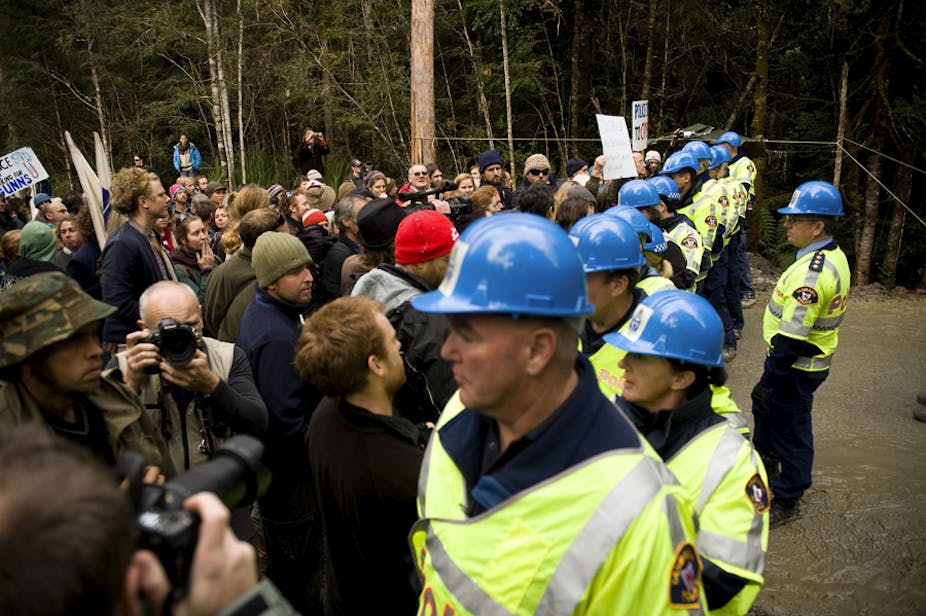The signatories to the Tasmanian Forests Agreement (TFA) have spent more than two years trying to square the circle of forest conflict in Tasmania. The deal they brokered deserves prima facie respect: it is the closest to sustainability the state will probably ever get.
While many have been critical of elements of the process, myself included, and while many are critical of elements of the content, myself included, the key question now is: “Could you or I ever have delivered a better package?”.
If you think you could have, then it is incumbent on you to explain not just what that package is but how it could have been acceptable to the other interests with whom it would have to be negotiated.
If you aren’t interested in negotiating then you are not promoting sustainability; you are simply advocating for a single interest.
Defining sustainability
Most people today accept the Brundtland definition of sustainability as development that “meets the needs of the present without compromising the ability of future generations to meet their own needs”.
Operationalising the definition in a specific policy context, however, requires political institutions to determine whose “needs” are met today and how much protection to give ecological systems to provide for future generations’ needs.
Such institutions cannot be dominated by a single economic, social or environmental constituency.
If the process is controlled by industry, then longer-term ecosystem conservation “needs” will be sacrificed to more immediate short-term demands for profits and jobs.

But equally, if the process is captured by environmentalists, an overly cautious approach to ecosystem protection may result in forgone development.
Sustainability, then, is about achieving an acceptable balance between economic, social and environmental interests and values. It requires properly constituted multi-stakeholder forums that engage in deep deliberation to broker an appropriate compromise.
Sustainability and forestry conflict
Since at least the late 1970s, forests and forestry have been lightning rods for conflict over the meaning of sustainability.
Australia has been a latecomer to new governance arrangements in general and to forestry in particular. The Forest Stewardship Council Australia was founded only in 2006, long after the organisation was well established elsewhere.
Today, the Forest Stewardship Council — long the bête noire of mainstream forestry — explicitly embraces this new governance sustainability principle. “Responsible forestry” emerges from the deliberations of the Council’s separate but equal “chambers” representing economic, social and environmental interests.
Tasmania has had virtually no new governance arrangements in the past two decades, ever since the failed “Salamanca Agreement” process. It was only in 2010 that a “roundtable” on forestry finally brought economic, social and environmental interests together.
After over two years of on-again, off-again negotiations, this not-too-unbalanced, mainly consensus-driven, multi-stakeholder negotiating group has — almost in spite of itself — produced a compromise deal aimed at achieving the required balance.
Who gets - and loses - what
Known as the Tasmanian Forests Agreement (TFA), the deal provides the following tradeoffs:
Environmental interests get 395,000 hectares of high conservation value forests protected immediately. Another 109,000 hectares will be protected later, providing the deal is “durable” — meaning that large-scale protests against the industry cease.
Environmental interests give up their long-standing campaign against native forest logging and their opposition to the utilisation of forest residues for a range of commercial uses.
Economic interests get a lower, but guaranteed minimum wood supply consisting of 137,000 cubic metres of high quality sawlogs. They also get yet-to-be-determine volumes of peeler billets and specialty timbers that are secured in “Permanent Timber Production Zones” and “Specialty Craft and Timber Zones”.
Economic interests give up their long-standing campaign to prevent most of Tasmania’s remaining public high conservation value forests from being “locked up” in national parks. They must drop their opposition to Forest Stewardship Council certification.
Social interests get compensation for affected firms and workers to transition to a smaller, but more secure timber industry. It will be aided by enhanced regional development funds to promote, among other options, value-added forest products.
Social interests give up the same things economic interests must give up.

The worst deal except for all the others
Winston Churchill famously remarked that “democracy is the worst form of government except for all those other forms that have been tried from time to time”.
The aphorism might aptly be applied to the current TFA. It is undoubtedly not perfect from a process and content perspective.
But all past efforts to achieve a compromise have failed. Spurning the current agreement will return business, workers and environmentalists to the war in the woods from which everyone loses.
Profits, jobs and the environment will all be trashed.
This deal may stink, but probably not as badly as any other deal that could have been negotiated.
There is, simply, no realistic Plan B. The Tasmanian Liberal Party’s 13-Point Plan simply returns the state to the forest wars of the past. Point 1 of the plan is that “Jobs and regional communities come first”, illustrating its lack of balance.
Likewise, the Tasmanian Conservation Trust’s Plan, which seeks to overturn the establishment of “Permanent Timber Production Zones” among other things, offers no solution. It cannot generate the durability that industry requires.
It is this reality—that there is no realistic Plan B—that deal supporters must ensure is understood by the state’s 15-member Legislative Council.
The Legislative Council must also give careful consideration to the effect of any amendments it proposes. The deal is a delicate balance between economic, social and environmental interests and will disintegrate if it privileges one sector over others.
The Legislative Council, as it is affectionately known, will debate the TGA legislation commencing 11 December 2012.
I, for one, hope they hold their nose and vote “Yes”.

